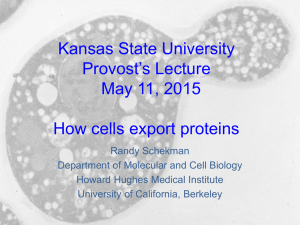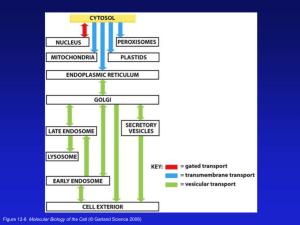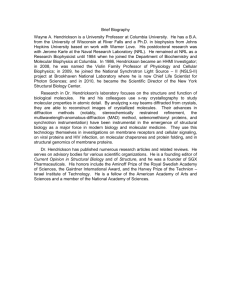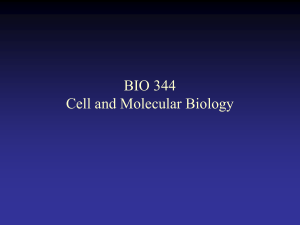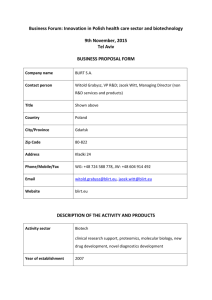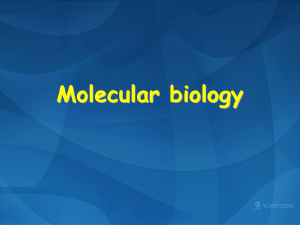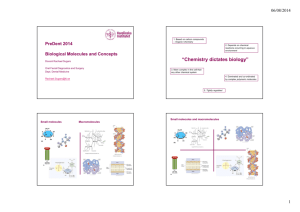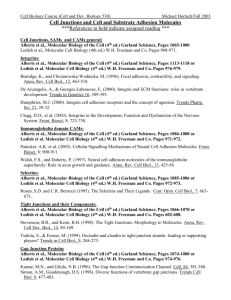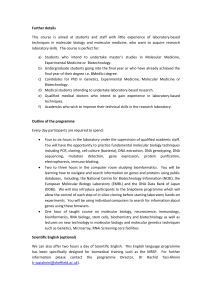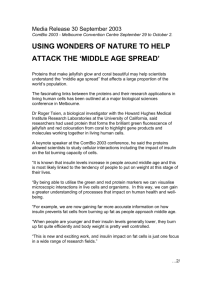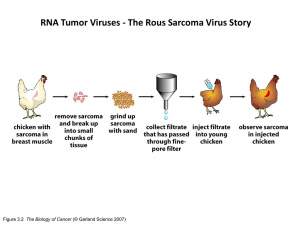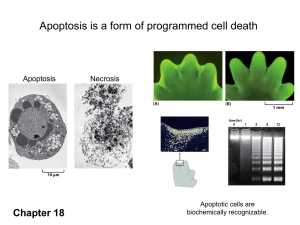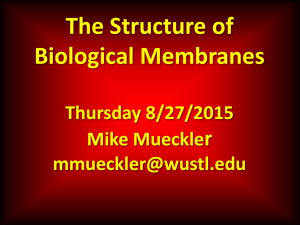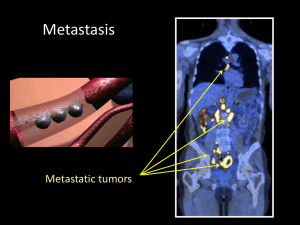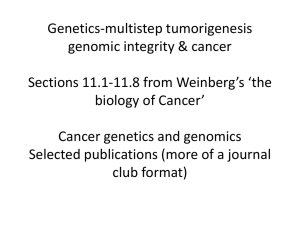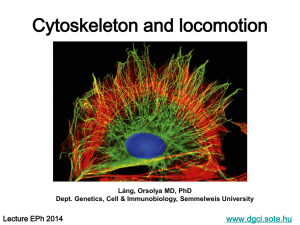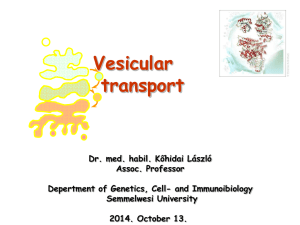Lecture 1 - Department of Biological Sciences
advertisement
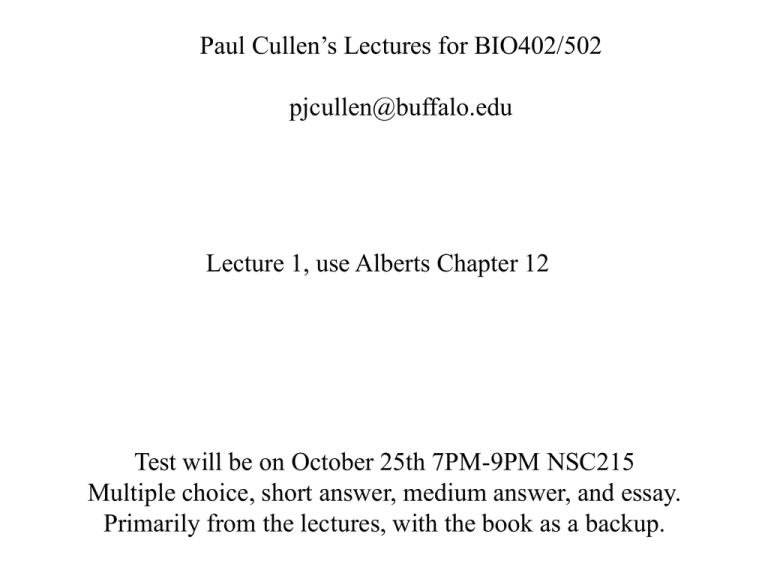
Paul Cullen’s Lectures for BIO402/502 pjcullen@buffalo.edu Lecture 1, use Alberts Chapter 12 Test will be on October 25th 7PM-9PM NSC215 Multiple choice, short answer, medium answer, and essay. Primarily from the lectures, with the book as a backup. Lecture 1 Protein Delivery to The ER, Golgi, Exocytosis Organelles are defined by the proteins and lipids they contain Protein Secretion Systems Are used by viruses Endocytic trafficking of retroviral Env proteins. (a) Overview of the clathrin-dependent endocytic pathway. Membrane proteins internalised through clathrin-coated vesicles are delivered to early endosomes, the main sorting station in the endocytic pathway. From here, molecules can recycle to the cell surface via the juxta-nuclear recycling endosome and/or the trans-Golgi network (TGN), or move to late endosomes [characterised by their internal vesicles as multi-vesicular bodies (MVB)] and lysosomes for degradation. How do the 30,000 Or so proteins find their Correct Cellular Locations? Figure 12-11 Molecular Biology of the Cell (© Garland Science 2008) Signal Sequences (or Patches) function as addresses Endoplasmic Reticulum = ER Figure 12-8 Molecular Biology of the Cell (© Garland Science 2008) Figure 12-35 Molecular Biology of the Cell (© Garland Science 2008) Ribosome QuickTime™ and a MPEG-4 V ideo decompressor are needed to see this picture. Translocon Figure 12-44 Molecular Biology of the Cell (© Garland Science 2008) Figure 12-44a Molecular Biology of the Cell (© Garland Science 2008) After the protein has been completely translocated, the pore Closes, but now the translocator opens laterally within the Lipid bilayer allowing the hydrophobic signal sequence to diffuse Into the bilayer, where it is rapidly degraded. (In this figure and the 3 figures that follow, the ribosomes have been omitted for clarity. Subcellular Fractionation Can be Used to Distinguish Between PMP and IMPs I Lysate P13 P100 S100 Msb2 Dpm1 Pgk1 J Buffer NaCl Urea Na CO SDS/Urea Density Gradient Centrifugation Can be Used to Distinguish Between PMP and IMPs Figure 12-37b Molecular Biology of the Cell (© Garland Science 2008) Proteins can be delivered to the ER by internal signal sequences Type I: N-terminal signal sequence Type II: C-terminus in ER Type III: N-terminus in ER but no N-terminal address Type IV: Multipass Type II Type III If more positively (+) charged amino acids follow the start-transfer sequences, then the polypeptide is inserted amino (N)-terminally. If more positively (+) charged amino acids proceed the start-transfer sequence, the polypeptide is inserted carboxy (C) terminally. Hydropathy Plots can Identify Integral Membrane Domains The GET Complex Targets Proteins to the ER That have a C-terminal TM domain
